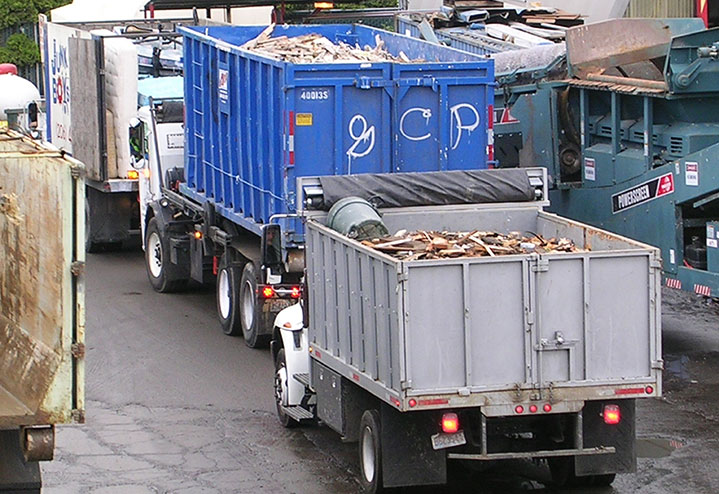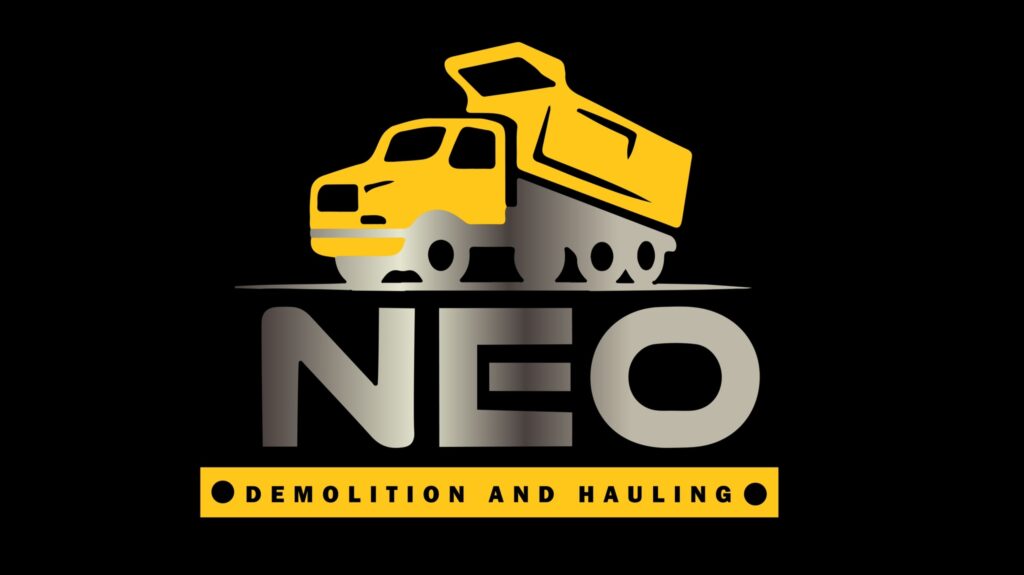When it comes to embarking on a demolition or hauling project, the first and foremost concern should always be safety. In North Hollywood, where the urban landscape constantly evolves, the need for such services is paramount. At NEO Demolition & Hauling, we take pride in setting the industry standard for safety protocols. Our team, comprised of qualified demolition professionals, leverages advanced techniques and state-of-the-art equipment to ensure every project’s success, with the well-being of all involved at its heart. As we delve deeper into the intricacies of our operations, you’ll discover the meticulous steps we take to guarantee your peace of mind. Whether you’re in the construction business, a homeowner planning a renovation, or merely curious, understanding these protocols is crucial. It’s not just about tearing down and hauling away—it’s about doing it right.
Identifying Risks: The Initial Step in Establishing Safety Protocols
Demolition projects, regardless of scale, involve a myriad of risks, making the identification of potential hazards a critical initial step. Before any equipment touches a structure, a comprehensive assessment is vital to uncover any underlying issues that might exist, such as unstable structures, hazardous materials, or hidden obstructions. Local demolition contractors, with their expertise and experience, play an indispensable role in this phase, meticulously analyzing every nook and cranny of the site to avoid any unforeseen complications during the demolition process.
The process begins with a detailed site inspection to evaluate the structural conditions, the presence of utilities, and environmental considerations. This assessment helps in designing a demolition plan that mitigates risks and ensures the safety and security of both the crew and the surrounding community. The objective is to foresee every possible scenario and establish contingency plans, leaving no room for ambiguity.
Moreover, identifying risks also involves acknowledging the environmental impact of the demolition activities. Professionals conduct thorough evaluations to detect the presence of asbestos, lead, or other hazardous materials. The proper handling and disposal of these materials are crucial to avoid any adverse effects on human health and the environment. By addressing these concerns in the initial stages, contractors can facilitate a smoother, more controlled, and environmentally responsible demolition process.
For projects within populated urban areas like North Hollywood, considerations also extend to neighboring properties and the community. Contractors work in close conjunction with the local authorities to ensure compliance with all applicable regulations and secure necessary permits. This cooperation helps in addressing any concerns raised by the community and alleviating them through transparent communication and rigorous adherence to safety standards.
In conclusion, identifying risks is a foundational step in the extensive tapestry of demolition safety protocols. It establishes a clear roadmap for the subsequent stages, ensuring that every potential hazard is addressed comprehensively. The meticulousness in this phase by local demolition contractors guarantees not just the success of the project but also the safety and well-being of everyone involved and affected, embodying a commitment to professional integrity and responsibility.
Implementing Strict Measures: Establishing Robust Safety Protocols
Once risks have been meticulously identified, the next imperative step is the execution of stringent safety measures. When choosing a demolition company near you, the significance of choosing a company that adheres to rigorous safety protocols cannot be overstated. The incorporation of strict measures is crucial to maintaining the integrity of the project and ensuring the safety of all stakeholders involved, including the crew, the public, and the environment.
To start, a solid safety protocol necessitates the establishment of clear communication channels. Everyone involved must be acquainted with the plan’s details, understanding their roles, responsibilities, and the actions to be taken in the event of an emergency. Regular safety meetings and training sessions are essential to keep the crew informed about the potential hazards and the preventive measures to be adopted.
In addition, protective gear and equipment are indispensable components of any safety protocol. Helmets, gloves, goggles, and protective clothing are mandatory to shield the crew from potential harm. Moreover, employing advanced, well-maintained machinery and equipment is pivotal in avoiding mechanical failures and accidents, thus ensuring the smooth progression of the demolition process.
Securely barricading the site is another pivotal measure. It helps in preventing unauthorized access and protecting the public from any potential hazards associated with demolition activities. Clear signage indicating the ongoing work and potential dangers is placed around the site to alert pedestrians and vehicles and guide them safely around the project area.
Ensuring environmental protection is also integral. Proper waste management procedures are implemented to dispose of debris and hazardous materials responsibly, preventing contamination and minimizing the impact on the environment.
Implementing these robust safety protocols is fundamental for any reputable demolition company. It’s not merely about deconstructing structures; it’s about doing so with utmost precision, responsibility, and regard for safety and the environment. Thus, when searching for a demolition company, prioritizing those that establish and strictly adhere to comprehensive safety measures is essential for the well-being of both individuals and the community.

Ensuring Compliance and Continual Assessment: The Ongoing Commitment to Safety
A demolition company’s duty to safety extends beyond the initial stages of risk identification and the implementation of stringent measures. It is a continuous commitment that requires adherence to regulatory compliance and ongoing assessments to identify and address any emerging risks promptly. This commitment serves as a reassurance to clients and the community that every project is executed with an unwavering emphasis on safety and professionalism.
Compliance with local, state, and federal regulations is non-negotiable. Every demolition company must operate within the legal frameworks that are designed to protect people and the environment. This involves obtaining the necessary permits and ensuring that all activities, from waste disposal to air quality maintenance, align with the prescribed guidelines. A breach in compliance not only jeopardizes the project but can also result in legal repercussions and damage to the company’s reputation.
The safety protocols established before the project began are not static. They are subject to regular reviews and modifications as the project progresses. Unexpected situations or changes in project scope necessitate immediate reassessment of the existing safety measures and, if required, the implementation of additional controls. This dynamic approach to safety enables the quick resolution of emerging issues, maintaining the integrity of the project, and safeguarding all involved parties.
Furthermore, continual training and education of the crew is crucial. As industry standards and technologies evolve, staying abreast of the latest developments and best practices is essential for maintaining high safety levels. Regular drills and training sessions empower the crew with the knowledge and skills needed to navigate the complexities of demolition work safely and efficiently.
In conclusion, the ongoing commitment to safety is a distinguishing attribute of a responsible demolition company. By ensuring consistent compliance and embracing a proactive approach to risk management, such companies exemplify an ethos of professionalism and responsibility, fostering trust among clients and contributing to safer, more sustainable communities.
Conclusion
Navigating through demolition and hauling is intricate and involves continuous efforts to ensure safety. Every step, from risk identification to implementing stringent measures and maintaining compliance, is pivotal. Maintaining high safety standards is essential, with a focus on precision, responsibility, and integrity in every project.
In conclusion, prioritizing safety, operating within a framework of excellence and transparency, and ensuring compliance are crucial in this field. It’s imperative to focus on the well-being of clients, teams, and the community. A commitment to safety and professionalism should be evident in each project undertaken. Choosing a partner such as NeoDemolition is essential for navigating the complexities and ensuring success in the multifaceted world of demolition and hauling services.
Frequently Asked Questions
Question: How are the neighboring properties protected during a demolition project?
Answer: Neighboring properties are safeguarded through the erection of protective barriers and careful planning to control the direction of falls and debris. Regular communication with neighbors is also maintained to address any concerns and minimize disruptions.
Question: What is the significance of regular safety meetings and training sessions in demolition projects?
Answer: Regular safety meetings and training sessions are vital to ensure that the crew is well-informed about the potential hazards and the preventive measures to be adopted. These sessions promote awareness, preparation, and adherence to safety protocols, helping to prevent accidents and ensure a smooth project flow.
Question: How are hazardous materials handled and disposed of during and after demolition?
Answer: Hazardous materials are identified during the initial risk assessment phase and are handled with extreme care by trained professionals. These materials are then disposed of following strict local, state, and federal guidelines to prevent environmental contamination and ensure public safety.
Question: What measures are taken if unforeseen risks arise during a project?
Answer: We conduct ongoing assessments throughout the project to identify and address any emerging risks promptly. If unexpected situations arise or the project scope changes, we reassess and modify the safety measures in place and implement additional controls as needed.

